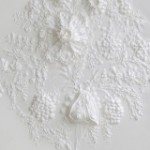One of the best features of having a database-driven e-commerce site is that there is one centralized place to store all your product information. You can then manipulate the data in all sorts of ways, and all of these applications can be updated in more or less automated fashions, integrating all the changes you’ve made to your one central source. Some examples:
- Build a print catalog
- Create an offline browsable catalog
- Create data feeds for shopping sites like Froogle, Amazon.com, shopping.com, shopzilla.com, and many more. These sites (except Froogle) charge you to either directly sell your product on their site or send you highly qualified traffic.
It’s always a good idea to grab the low hanging fruit (i.e. taking opportunities that are relatively easy to implement and have a large potential upside). Froogle, Google’s shopping search engine, is my pick for shopping sites. Not only is it completely free, but it gets a good deal of traffic and isn’t likely to dry up anytime soon. Since it costs nothing but some time (and this guide) to implement, I would recommend it to any e-commerce vendor on Netsuite. Froogle really likes a fresh data feed – you will want to set up a recurring reminder for yourself so you can submit a new feed every two weeks or so (it’s really easy after it’s all set up).
Set Up Your Google Account
First, you will need a merchant account with Google. Start with their Froogle merchant home page. There you can read more about it and sign up. Once you have logged in with your account, set up your store with its URL and other basic information. Next, create a new data feed. Give it a name like mystore.txt, select your product type (or other) and encoding. Make sure the delimiter is a tab (t) and turn on quoted fields. That’s it; you’re all set up on Google’s end.
Create a Partner for Froogle
This one is optional, but it’s a great way to track where the sale came from, and doesn’t require Netsuite’s overly expensive web stats package (which should come free). Under Lists > Relationships > Partners, select New. Name it Froogle and give it a partner code. For this example, I’ll use a partner code of froog. Keep track of the partner code you made, you will need it later.
Customize Your Netsuite Data Feed
Netsuite has done some of the work already for you by default. On the item record for each product, there is a field on the store tab to select the feed types this product applies to. By default it selects them all, but this is one way to filter out some of your products. The ‘product feed’ in Netsuite is actually just a special saved search. To find the default Froogle feed, go to Setup > Web Site > Product Feeds. You will find the four default feeds. Select the Froogle feed and click ‘Edit Saved Search’. Make sure to save it with a new name.
Next, review the search criteria. By default, it skips matrix child items. Since child items don’t have their own picture fields, it’s probably best to keep it there. I added a criteria for ‘Online Customer Price’ is greater than 0.05, just in case there were any products without prices. You may want to add your own extra criteria here, if there are certain products you want to exclude. On the results tab, you want to change the fields and labels to match those required by Froogle. Update the custom label field as follows, and remove any extra columns not in this list. Make sure to put them in the same order I’ve listed them:
| Field | Custom Label |
| Item URL | product_url |
| Feed Name | name |
| Detailed Description | description |
| Image URL | image_url |
| Category | category |
| Base Price | price |
Your data feed is now properly set up. It’s time to upload. The preceeding steps will only need to be performed once – if you are submitting a fresh feed after your first, the following steps will guide you through it.
Prepare Your Data Feed
It’s already time to upload your first feed – wasn’t that easy? to view your custom feed, go back to Setup > Web Site > Product Feeds. Your custom Froogle feed should be there, click it. You may want to scroll through it a bit to make sure everything looks right. When you’re ready, click the export – CSV button. If you have Netsuite v11, the export – excel option currently doesn’t work. A .csv (comma separated file) will work fine. Save it to your desktop and open it in Excel. Delete the first five lines of the spreadsheet so the column names are the first line. Double check it here if you like, it’s about to get less readable. In Excel, go to File > Save As. In the ‘Save as type’ field, choose Text (Tab delimited)(*.txt). Name your file the same .txt filename you set up in your Froogle account. The file is ready to upload, unless you want to add the partner code.
Add Your Partner Tracking Code (optional) Next, open the text file in a text editor. You will then add the partner code to the product_url field using a simple search and replace.
Search for: /.f
Replace it with: /.f?partner=froog
If you chose a different partner code above, enter it instead of froog. Now save it, making sure it’s still a .txt file.
Submit Your Data Feed
All that’s left is to submit your feed. Log in to your Froogle merchant home page and click the filename of the data feed you set up earlier. There will be an upload box that allows you to browse to your local file and send it through your browser. Unless your text file is over 10mb (very unlikely), this is all you need to do. Froogle will tell you right away if any of the lines in the data feed contained errors, but it takes a couple days to see your products on Froogle. If you click on ‘View Store Info’, there is a link to ‘View this store on Froogle’. Click it and bookmark it as an easy way to check on your new feed.
Potential Problems & Troubleshooting
I’ve heard of a few problems that people run in to when setting up feeds.
Froogle says it can’t load images
If you get an error in your Froogle merchant center that says it can’t load your images, make sure your images have the ‘available without login’ box checked in Netsuite’s record for the image. Otherwise Netsuite needs to set a cookie to display the image, and Froogle’s bot won’t accept a cookie. If you find you need to change this on all your images, the best way is to download the whole directory and re-add all the images in a zip file using the ‘add multiple files’ button. On that page, you can select ‘available without login’ for all the images you are uploading.
Some Images Don’t Show Up
If your feeds are successful, you may find that some images don’t show up on Froogle. I’ve seen this myself, and as far as I can tell it’s caused by the web site timing out when it should be sending Froogle’s bot the image for the product. There’s not much you can do about this, other than hope Netsuite improves their performance.
That’s it – you’re done. If you set up a partner code, you can watch the sales through Reports > Sales > Sales by Partner. If Froogle produces some good sales to you, it may be worth looking in to other shopping search engines.
Sound Too Hard?
Luckily, I’m a consultant. For $350 I will set up your merchant account, customize your data feed (including any special filters or customizations you specify), and sumbit your first feed for you. I will then walk you through the process for submitting the prepared feed yourself until you are up and running on your own. For more details, contact me.
More from Fourth Wave
David Norris
Latest posts by David Norris (see all)
- NetSuite Announces Plans to End Promotion Functionality for Site Builder - January 16, 2020
- Most NetSuite Websites Are No Longer Tracking Safari Conversions for Adwords - November 20, 2017
- Make Your NetSuite Site Builder Site Secure – HTTPS Throughout - May 28, 2017
- An Introduction to Automating XML Sitemaps for NetSuite Companies - November 13, 2016
- An Introduction to NetSuite’s Reference Checkout & My Account Bundles - April 18, 2016







Thanks for these instructions! Very easy to follow. I do have a question: the product description that pulls is from my store description and I have gone in and changed this for the purposes of the froogle results. (My NS store descriptions include some html coding and assume that you know a little more about the product since you are already on the site. I’ve changed that info to be more general “benefit” descriptions for froogle purposes.) If I want a special froogle description, should I set up a special field in my Netsuite account for each product’s froogle description? Thanks!
David,
Froogle doesn’t like HTML tags in their product descriptions, so in your case I would either edit the item template so you can use plain text in the description (hard coding the HTML tags around the text), or use separate fields for Froogle and the item detail page like you mentioned. The easiest solution might be just to create another item field for the Froogle description.
Your tutorial for setting up the Froogle feed was simple to use. I am having problems with the images displyaing in Froogle. I contacted Froogle and they said the content-type header of the image was telling Froogle that the image was html. I have been working with NS but to no avail. Any ideas?
Marcus,
I would guess the most likely culprit is the ‘available without login’ checkbox for the image itself. If you edit the image in the file cabinet, you can see if the box is checked. It has to be checked for data feeds to work.
If that doesn’t fix it, please email me a sample from your data feed and I’ll look it over.
-David